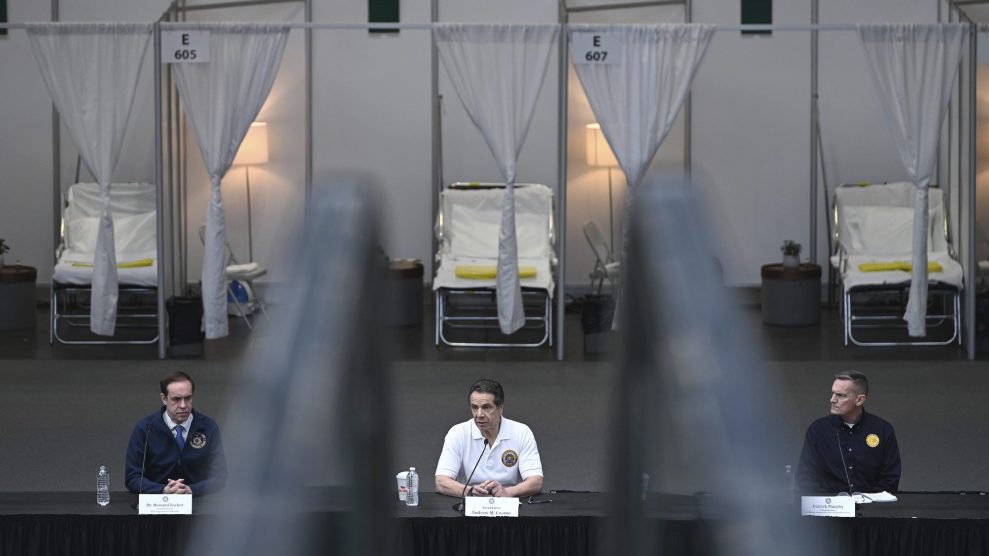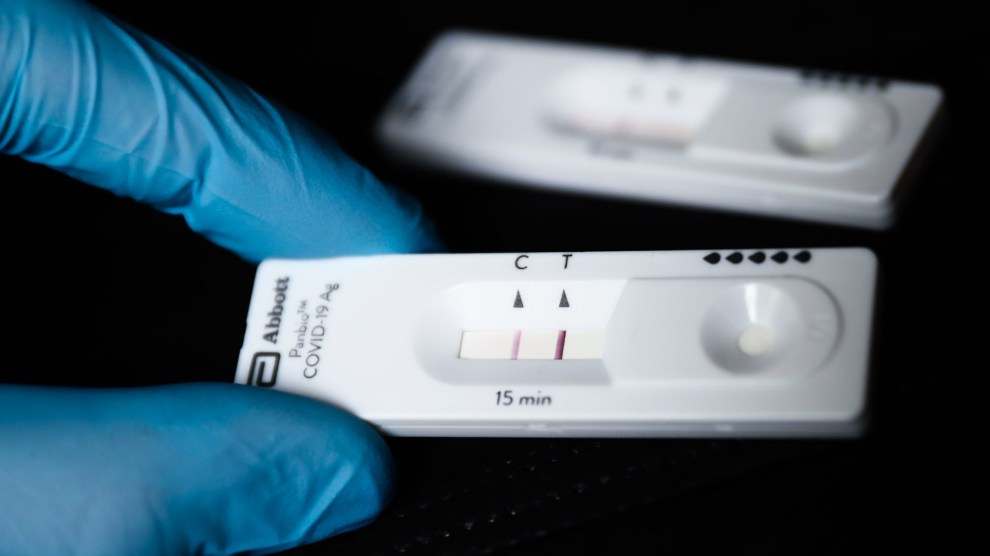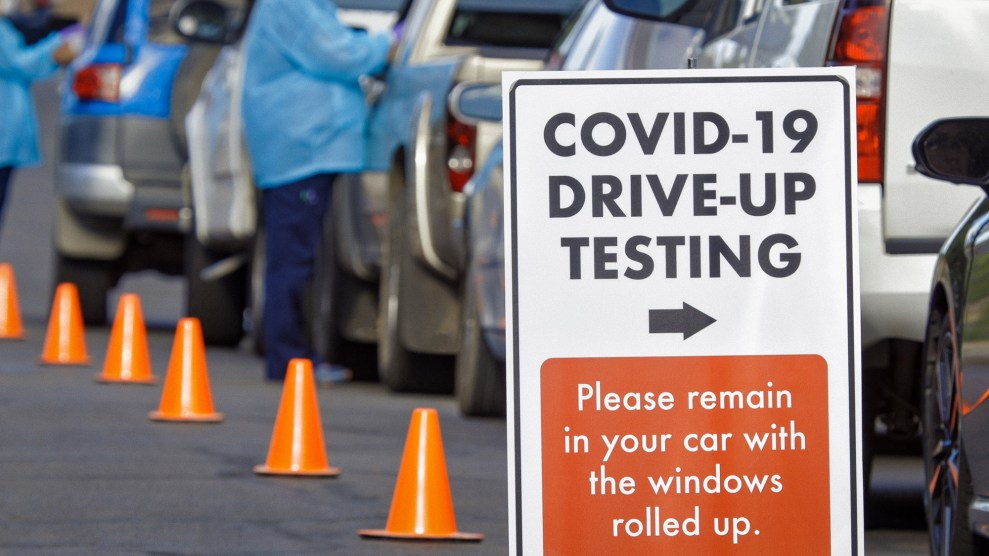
Against a backdrop of hospital beds, New York Gov. Andrew Cuomo addresses the media inside New York City's Jacob Javits Center, now a temporary FEMA hospital.Anthony Behar/Sipa USA via AP Images
As of today, more than 239,000 people in the United States are infected with the coronavirus, the most cases of any country in the world. More than 6,000 people have died, which is almost twice the number of people who were killed during the 9/11 terrorist attacks.
The number of people infected is doubling every six days, a rate higher than that of Italy, Iran, and Germany. The number of deaths is doubling every four days.
From New York to Michigan to Louisiana, hospitals are overwhelmed with new cases. In some states such as New York and Connecticut, there’s already a shortage of hospital and ICU beds. As the virus continues to spread, more states are going to run out of hospital beds.
New projections from the Institute of Health Metrics and Evaluation, a research center based out of the University of Washington, have created models that predict when every state would run out of resources including hospital beds, ventilators, and ICU beds in the next four months. Its predictions assume the strict social distancing policies that are already in place will continue in most states. Researchers say they expect the worst of the epidemic to be over by June, but not before it burdens our healthcare systems.
Using the institute’s data projections, we created maps to show which states will run out of hospital beds, by when and by how much. The darker the shade, the more acute the shortage.
Tennessee has such an acute shortage of medical supplies and protective gear that the governor asked healthcare workers to repurpose swim goggles and diapers into masks. The state is looking to convert college dormitories, convention centers, and hotels into makeshift hospitals
Many states, such as New York, New Jersey, and Louisiana, are already running out of ICU beds. Many more states will face an acute shortage of ICU beds in the coming weeks.
Researchers from the Institute of Health Metrics and Evaluation suggest that interventions such as “canceling elective procedures, setting up additional beds, constructing temporary facilities, and using mobile military resources” can ease the burden on hospitals. “Production of ventilators, masks, and other personal protective equipment may need to be scaled up to ensure these resources are available to hospitals as demand grows.”













